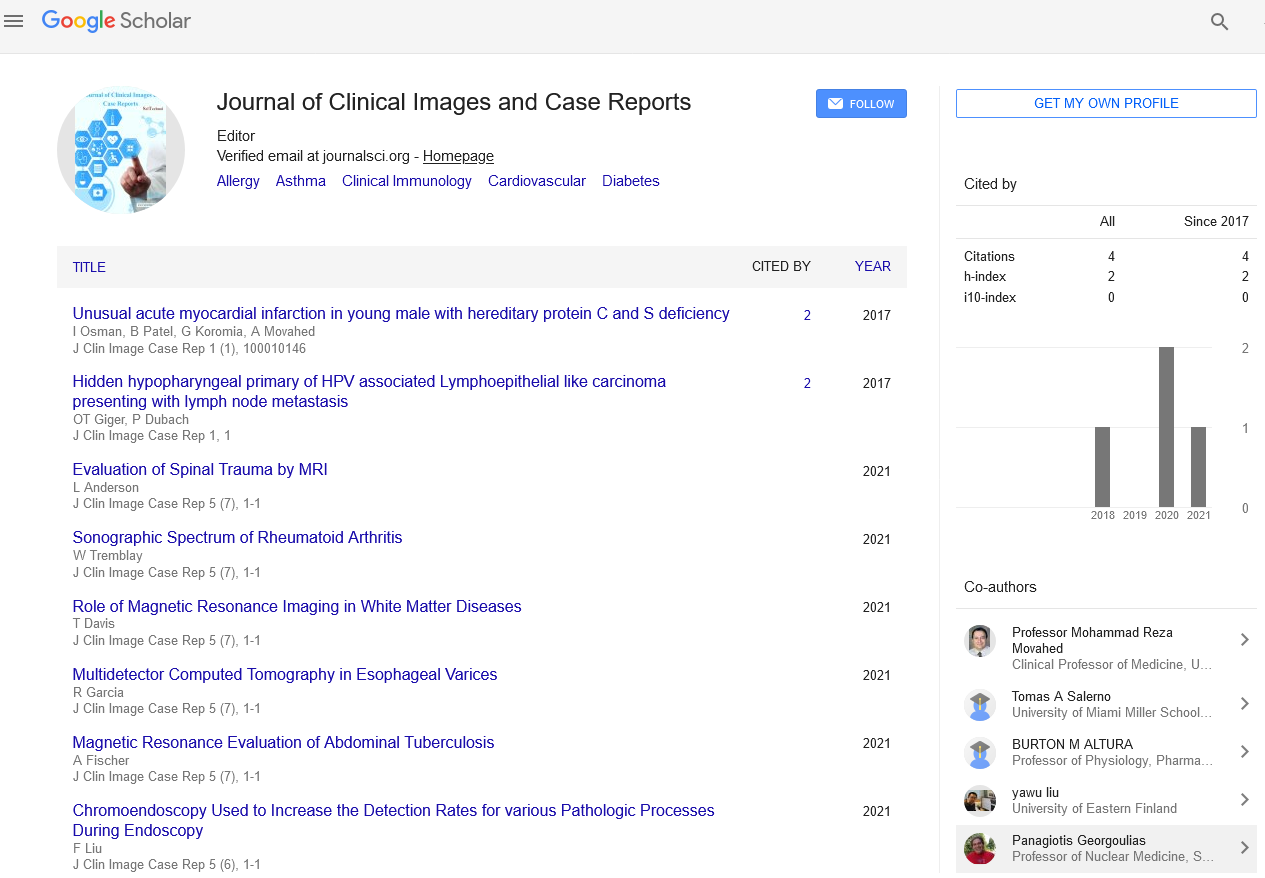Opinion Article, J Clin Image Case Rep Vol: 5 Issue: 5
A Brief Note on Alzheimer's Disease in Brain Imaging
Wanda P. Almeida
Department of Pharmaceutical Sciences, University of Campinas, 200, Candido Portinari, Campinas, SP ZC 13083-871, Brazil
*Corresponding author: Wanda P. Almeida, Department of Pharmaceutical Sciences, University of Campinas, 200, Candido Portinari, Campinas, SP ZC 13083-871, Brazil, Email: almedia@unicamp.br
Citation: Almedia W (2021) A Brief Note on Alzheimer's Disease in Brain Imaging. J Clin Image Case Rep 5:(5) 159
Received: May 03, 2021 Accepted: May 17, 2021 Published: May 24, 2021
Keywords: Alzheimer's disease, Brain imaging, Genetics
Introduction
Gastrointestinal surgery could be a treatment for diseases of the Over the last four decades, imaging has played a number of roles in the study of Alzheimer's disease (AD). To rule out other causes of dementia, computed tomography (CT) and then magnetic resonance imaging (MRI) were initially used as diagnostic tools. More recently, studies of cerebral metabolism using a range of imaging modalities such as structural and functional MRI and positron emission tomography (PET) have been conducted. the future task will be to combine imaging biomarkers to make diagnosis.
The scope of Neuroimaging in Alzheimer Disease
In the last decade, the role of neuroimaging in Alzheimer's disease (AD) research and practice has changed dramatically. At the same time, the potential of brain imaging has increasingly increased with new modalities and innovative ways of capturing and analysing images [1]. This article isn't meant to be exhaustive. Instead, it focuses on structural, functional, and molecular imaging in Alzheimer's disease.
Imaging in the Diagnosis of Alzheimer Disease
The confusion that comes with a clinical diagnosis of Alzheimer's disease has prompted researchers to look for diagnostic imaging markers. The inaccessibility of the brain ensures that imaging plays a key role as a "window on the brain." A definitive diagnosis also needs histopathological evidence, and since the brain is inaccessible, imaging plays a key role as a "window on the brain [2]." Historically, imaging—first computed tomography (CT) and then magnetic resonance imaging (MRI)—was only used to rule out surgically treatable triggers.
Structural MRI Applied to Alzheimer Disease
MRI takes advantage of the fact that protons have angular momentum that is polarized in a magnetic field. This means that a radiofrequency pulse will change the energy state of protons, and when the pulse is switched off, the protons can emit a radiofrequency signal when they return to their original energy state Sequences” can be configured to be adaptive to different tissue characteristics by combining different gradients and pulses.
Other Brain Imaging Technique
Functional MRI and functional connectivity MRI
Both patients with AD and those at risk have been treated with MRI techniques that take advantage of the blood oxygen level dependent (BOLD) signal. These studies include methods that use cognitive tasks to measure brain activity and functional integration experiments conducted during resting states.
Diffusion tensor imaging
DTI has been used to investigate the integrity and connectivity of white matter in dementia patients and those at risk of developing dementia. Reduced white matter integrity, as determined by decreases in anisotropy (due to axonal limitations on lateral diffusion), is now a commonly documented finding in patients with Alzheimer's disease and preclinical syndrome.
Limitations of Structural MRI in Alzheimer Diseases
Molecular precision is lacking in structural MRI. It is downstream from the molecular pathology because it cannot detect the histopathological hallmarks of AD (amyloid plaques or neurofibrillary tangles). Cerebral atrophy is a nonspecific consequence of neuronal injury, and although some patterns of loss are associated with particular diseases, they are not entirely unique.Atrophy patterns correlate with those of other disorders, and atypical types of AD have atypical atrophy patterns as well. MRI may not be tolerated in more seriously compromised individuals or those with claustrophobia, while a quick CT scan may be more feasible.
 Spanish
Spanish  Chinese
Chinese  Russian
Russian  German
German  French
French  Japanese
Japanese  Portuguese
Portuguese  Hindi
Hindi 